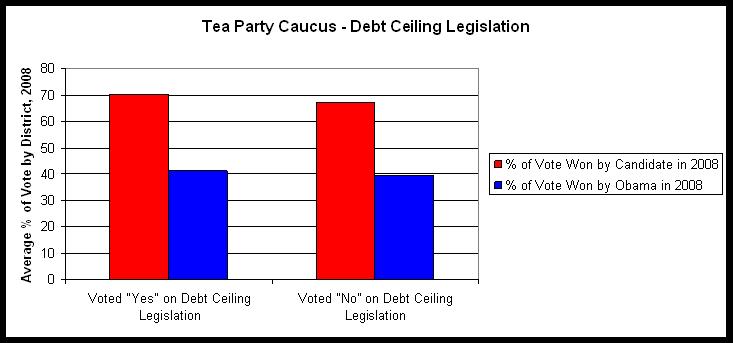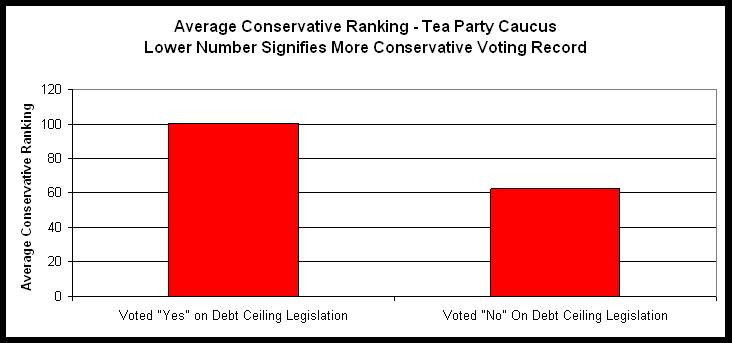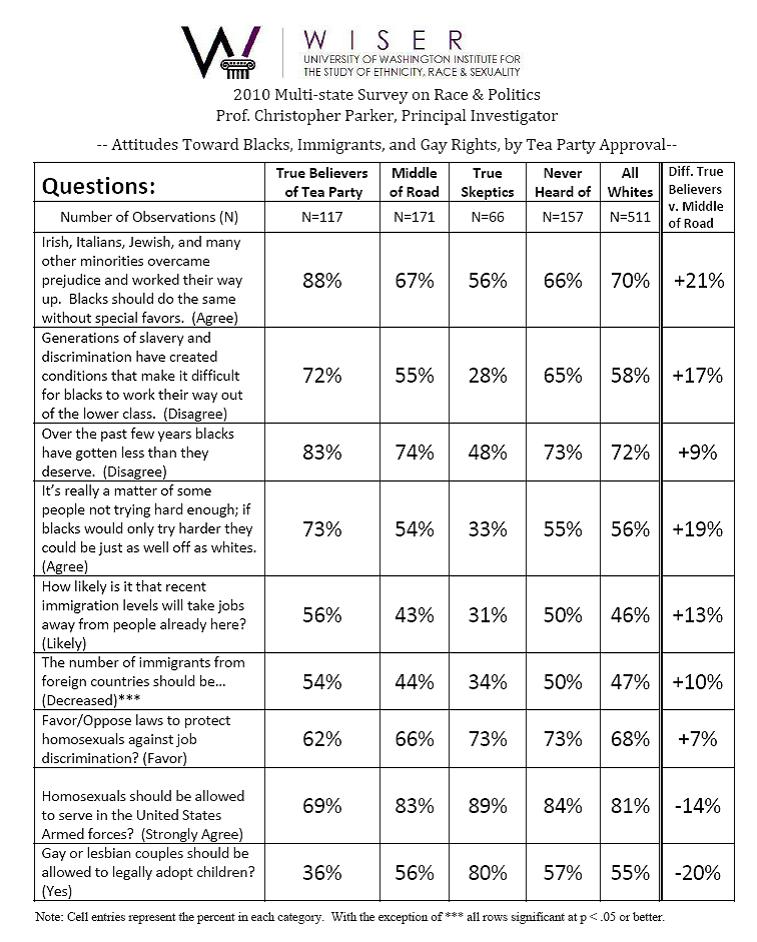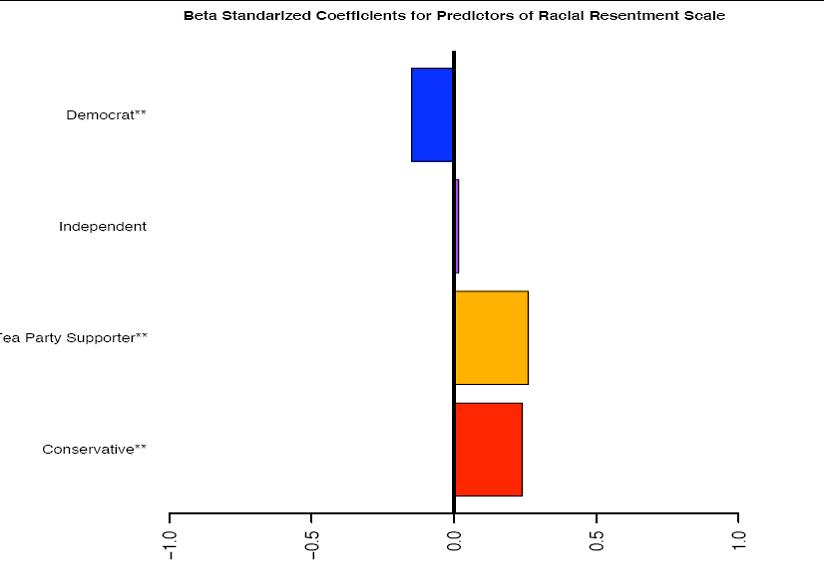No, that’s probably not why Eric Cantor lost, and no, that’s not what we should conclude from his loss.
To all of you who were lurking in the twitterverse last night, I apologize if I seemed to take a bit too much pleasure in pushing back on the instant analysis issued by everyone from Chuck Todd to Chuck Wagon. But let me ask you: since no name-brand pundit that I know of saw Cantor’s loss coming (on this point, see Jaime Fuller’s wonderful “Holy Crap” summary!), why should you believe them when they then try to explain what it means? The answer? In the absence of actual data regarding who voted (more on that in a moment), you probably shouldn’t. Of course, that’s not going to stop pundits from trying to glean the national implications of Cantor’s loss.
So, at the risk of piling on, let me explain in a bit more detail why you should view most of the Cantor post-mortems with a great deal of skepticism. Let me begin by addressing some of the more popular but empirically vacuous bits of punditry.
1. Cantor’s loss means immigration reform is dead.
This was the initial reaction from pundits like Todd, and it is being repeated today by the Washington Post’s Chris Cilliza and others. The logic seems to be that since Cantor expressed a willingness to discuss amnesty for the children of illegal immigrants as part of an overall immigration package – a position his opponent David Brat attacked – then Cantor’s loss shows that immigration reform is a non-starter. There’s a couple of problems with this interpretation. First, it presumes that immigration reform wasn’t already dead, or at least on life support, even with Cantor in the House. Second, it’s not clear how much opposition to immigration reform in Cantor’s district had to do with Cantor’s loss. In fact, a Public Policy poll indicates that 72% of those surveyed in Cantor’s district strongly or somewhat support the elements of a bipartisan immigration reform bill. That support includes 70% of Republicans who responded to the survey, and 73% of independents.
2. Cantor’s loss is good news for Hillary Clinton/bad news for Marco Rubio/Jeb Bush/fill in the name of moderate Republican presidential candidate.
Ezra Klein, among many others, is pushing this line as one of his 11 lessons to draw from Cantor’s defeat. (Note: as I tweeted at length last night, my view is that at least 5 of Klein’s lessons are of dubious empirical validity.) But it is extremely misleading to draw national implications from one House primary race. We might just as well conclude that Lindsey (I support immigration reform) Graham’s Senate primary win suggests moderate Republicans are poised to do well in 2016. The fact is that you shouldn’t draw any implications regarding the 2016 presidential race from an outcome based on about 12% turnout in a single House district.
3. Cantor’s loss shows money can’t buy elections.
It is true that Cantor vastly outraised and outspent Brat by some 5-to1. But about 39% of Cantor’s money came from PACs, which is not unusual for someone occupying a leadership position, and only 2% (about $95,000) from small contributors. In contrast, Brat received no PAC money, but drew 33% ($65,000) of his contributions from small donors. As my colleague Bert Johnson is fond of pointing out, small contributors tend to be activists with strong partisan preferences. In addition, David Levinthal, using financial disclosure forms, indicates that only 12% of Cantor’s money came from within his district. So, the effective disparity in campaign contributions may not be as great as the gross spending numbers suggest.
4. Cantor’s loss means all Republican establishment candidates, particular in leadership positions, are vulnerable to Tea Party challengers.
As Klein asserts, “These losses mean no Republican is safe.” Presumably the pundits are referring to people like Senate minority leader Mitch McConnell, or Senator Lindsay (I support immigration reform) Graham, who both easily beat back Tea Party challenges? Keep in mind as well that two weeks ago these same pundits were explaining how the Republican establishment had figured out how to beat Tea Party-backed candidates!
I could go on, but I hope you see my point. What all these instant analyses have in common is a desire to draw national implications from a local race that, in the absence of data to the contrary, likely turned primarily on local constituent concerns. This tendency to draw sweeping conclusions from limited data is an unfortunate characteristic of today’s social-media driven punditry. That strategy may increase readership, but often at the expense of getting the story right.
So why did Cantor lose? We know from the PPP poll I cited above that he was not very popular in his district; only 43% of Republicans and 23% of independents approved of him, compared to 49% and 66% expressing disapproval, respectively. It is also the case that the House Republican leadership was not very popular (41% approval among Republicans, and only 16% among independents). Finally, we know turnout was up from the Republican primary in 2012 (a presidential election year) by about 20,000 voters according to Martina Berger, in an open-primary state in which there was no Democratic primary in Cantor’s district, so it is likely that independents participated in the Republican primary to a greater degree than might be expected. I hesitate to say much more about the composition of yesterday’s electorate without more data, but it wouldn’t surprise me if Cantor lost primarily because many voters viewed him as too concerned with leadership issues and thus out of touch with local district concerns. That’s not very earthshattering, and it is disappointing to those seeking some deeper meaning in Cantor’s defeat. But sometimes the simplest explanations are the best. In the absence of evidence to the contrary, and until more data comes in, that’s my story and I’m sticking to it.
Update 1:16. The WashingtonPost is doubling down on the immigration angle here and dismissing the polling data I cited by saying that the poll doesn’t survey only Republicans. Of course, it does have results for Republicans but to find them you have to actually read the poll which, evidently, the WaPo writers find too time consuming. And, of course, the Virginia primary is open to anyone regardless of partisan affiliation, so it’s useful to know the opinions of non-Republicans as well. Now, it may be, as the writer would have us believe, that turnout was dominated by the 23% who opposed immigration reform rather than the 70+% who supported it. But you can’t simply assert that this was the case without supporting evidence.
Update 1:56. I haven’t said much about whether crossover voting by Democrats along with independents contributed to Cantor’s defeat (but see this!) However, an initial analysis by Michael McDonald and by Scott Clement suggests the evidence doesn’t support the crossover voting thesis, although in the absence of exit polls it is hard to tell conclusively.





